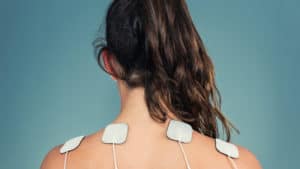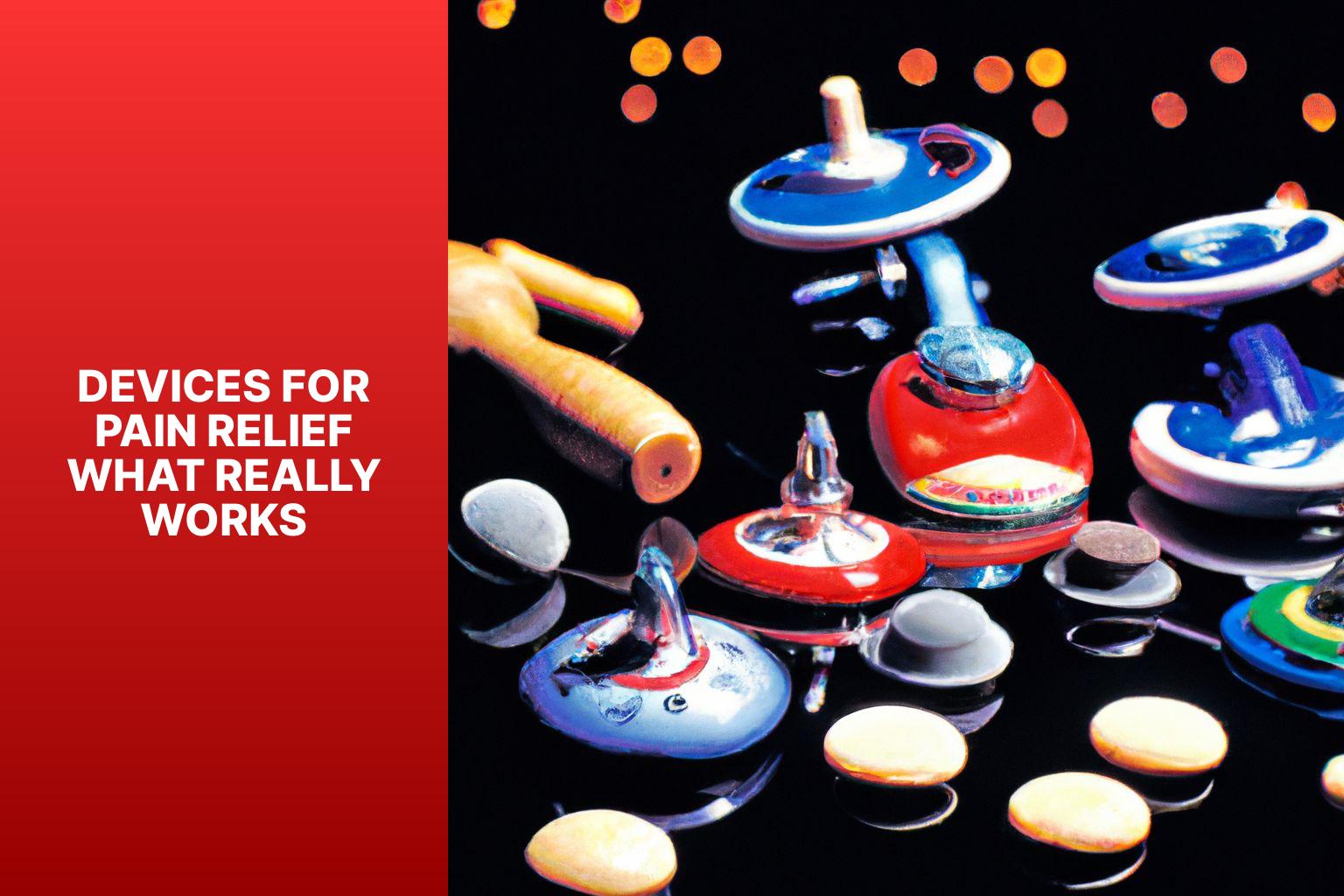Chronic pain impacts over 50 million Americans. It can severely reduce quality of life and ability to function. However, various treatment approaches provide hope.
The most common chronic pain conditions include back pain, arthritis, nerve pain, fibromyalgia and migraines. Causes range from injuries to illnesses to lifestyle factors. Symptoms like constant stiff joints or relentless headaches paired with exams help diagnose chronic pain.
Treatments span medications like pain relievers or antidepressants to therapies like physiotherapy or talk therapy to alternative medicine. More invasive solutions include nerve blocks and electrical implants. Lifestyle changes like posture corrections, exercise, diet, relaxation and sleep hygiene also help manage pain.
Coping with the challenges of chronic pain involves social support, pacing activities and support groups. Continued research promises more options to alleviate suffering from persistent pain in the future.
Comprehending Drug-Free Pain Management Technology
Pain relief devices increasingly provide methods to alleviate pain without medication. Technological advancements have led to various options using electrical stimulation, thermal regulation and other emerging techniques to safely manage numerous sources of distress. This non-invasive array empowers personalization of treatment plans to meet individual comfort needs.
Why Explore Pain Relief Devices?
These devices offer drug-free pain alleviation through technology, diverging from traditional solutions like analgesics or physical therapy alone. Chronic pain is notoriously difficult to treat through medication alone, rendering additional modalities essential to quality of life.
Pain relief devices also empower self-care and independence. Their convenient home use means users can administer treatment even for episodic pain like migraines without disrupting work or family responsibilities to travel to an appointment.
Finally, personalization in duration, location and intensity of therapy maximizes therapeutic effects while minimizing risks of skin damage or discomfort. For example, TENS units allow changing electrical impulse strength, while cold packs offer targeted spot ice therapy.
A Growing Market in Response to Rising Needs
The global pain relief devices market is projected to grow at a 6.1% CAGR between 2023 to 2030 as demand heightens for drug-free options to quell rising tides of chronic pain patients. This demand stems from an aging population more prone to joint pain plus 21st century lifestyle factors like technology overuse straining backs.
As modern life fuels pain incidence, the billion-dollar pain relief industry answers calls accelerating innovation to ease suffering through state-of-the-art and holistic pain-blocking solutions.

Examining Available Pain Relief Devices
Several categories of pain relief devices exist, each uniquely blocking discomfort through various mechanisms:
Transcutaneous Electrical Nerve Stimulation (TENS) Units
What They Do: Deliver mild electrical impulses through electrodes placed on the skin to stimulate nerves and modify pain signal perception.
How They Help: Prevent pain signals from reaching the brain by activating natural pain killers in the body.
Conditions They Treat: Chronic back pain, arthritis, migraines, fibromyalgia and many more.
Heat Therapy Devices
What They Do: Heating pads, wraps and compresses apply targeted heat stimulation to specific areas to increase blood flow to tissues.
How They Help: Enhance circulation to relax tense muscles contributing to stiffness or pain sensitivity.
Conditions They Treat: Osteoarthritis, neck, shoulder and muscular back pain.
Cold Therapy Devices
What They Do: Ice packs, cold wraps or compresses lower skin temperature to constrict local blood vessels and numb nerves.
How They Help: Numb painful areas and reduce inflammation causing discomfort.
Conditions They Treat: Post-surgery inflammation, joint pain flare ups, sprains or strains.
Emerging Device Examples
- Ultrasound Devices: Use sound waves to generate deep tissue heating to promote healing.
- Electromagnetic Therapy: Utilize magnets or pulses targeting affected areas to modify pain signals.
- Vibration Therapy: Uses gentle oscillating vibrations to increase blood flow and relax muscles.
Identifying the unique ways these devices influence pain pathways assists individuals in selecting suitable options tailored for their needs.
Understanding How Pain Relief Devices Work
Targeting Body Pain Mechanisms
Pain relief devices function by targeting various physical and physiological mechanisms causing acute or chronic pain in the body in drug-free methods.
Electrical Nerve Stimulation techniques take advantage of the body’s extensive network of sensory nerves woven throughout tissues. Low voltage electrical impulses overwhelm local nerve endings with sensations, preventing real pain signals from reaching the brain.
Meanwhile, thermal regulation leverages the effects of temperature change on tissues, taking advantage of physics and blood flow. Heat relaxes tense muscles pulling on joints to temporarily ease chronic stiffness and discomfort. Cold constricts local blood vessels to numb areas swelling with fluid and inflammation.
Other emerging biophysical techniques like vibration therapy or ultrasound may support healing or use magnetic forces to influence tissues. Their effects all ultimately block, numb or desensitize pain signal perception through nerve networks, reducing the brain’s perception of discomfort in the area.
Matching Approach to Pain Cause
Selecting suitable pain relief devices relies on accurately identifying the source of discomfort, whether steming from:
- Damaged Nerves: Electrical stimulation blocks misfiring pain signals.
- Muscle Tension: Heat therapy unravels contracted tissues.
- Inflammation: Ice diminishes fluid buildup pressing on nerves.
- Injuries: Ultrasound accelerates natural healing.
- Poor Circulation: Hot and cold improve localized blood flow.
Pinpointing root biological factors generating pain allows matching technology influencing those exact pathways for optimal relief.
Evaluating the Evidence Supporting Pain Relief Devices
Clinical studies offer growing evidence that pain relief devices can successfully reduce pain and improve well-being. Research demonstrates:
TENS Units
- Effectively decrease migraine, chronic back pain, arthritis and fibromyalgia symptoms
- Safely provide temporary pain relief when utilized correctly without significant side effects unlike oral analgesics
- Reduce reliance on medications in multi-modal pain management programs
Heat Wraps
- Lessen osteoarthritis and rheumatoid arthritis joint pain
- Enhance mobility for activities of daily living among elderly with chronic joint stiffness
- Loosen muscles following injuries or poor posture aggravating areas
Cold Therapy
- Diminish post-surgery and post-workout inflammation and discomfort
- Provide similar swelling and pain reduction to NSAID drugs without side effects
- Rapidly reduce acute injury or strain swelling when applied quickly
However, some research gaps persist. Data remains limited on comparative effectiveness to other interventions or optimal treatment protocols and durations. Consulting doctors when integrating devices into pain management ensures suitability and efficacy.

Implementing Pain Relief Devices Safely, Effectively
Exploring pain relief device options with your health care team allows customizing treatment plans for lasting pain improvements while avoiding complications.
Seeking Professional Consultation
Guidance from knowledgeable practitioners proves invaluable when initiating device therapies by:
- Confirming appropriate conditions and causes of pain
- Catching contraindicated health issues potentially aggravated by devices
- Providing product instructions catered to user factors like age, sensitivities or skin conditions
- Crafting treatment regimens with optimal intensities and durations for sustainable relief
- Monitoring progress adjusting protocols accordingly for continual comfort
Adhering to Usage Guidelines
Carefully following manufacturer directions prevents avoidable harm, paying attention to:
Prior to Use
- Thoroughly read user manuals to understand device features
- Complete test patches on low settings assessing skin sensitivity
- Check condition ensuring no damage impacting safety or function
During Use
- Increase intensity gradually assessing comfort and relief
- Position accurately on painful locations for optimal effects
- Set timers preventing accidental overexposure from forgetting devices
After Use
- Clean accessories like pads or probes preventing contamination
- Store properly avoiding damage from drops or crushing
- Watch for unusual skin changes needing evaluation
While powerful pain fighters, misusing therapy devices risks skin injuries or exacerbating pain. Patience and precaution safeguard their healing potential.

Notable Pain Relief Device Options
The array of pain relief devices empowers individuals to explore options matching specific comfort needs.
TENS Units
TENS units’ electrical nerve stimulation techniques provide versatile relief for various common conditions.
Benefits
- Compact size facilitates portable use for on-the-go therapy
- Multiple intensity settings customizable to pain levels
- Some models offer massage-like sensations through pulsing stimulation
Considerations
- Daily use often required given temporary pain relief effects
- Electrode pad positioning impacts results requiring some trial and error
- Not recommended for pain from cardiac causes due unsafe rhythm risks
Heat Therapy Devices
Heat pads, wraps and compresses leverage the soothing power of gentle warmth.
Benefits
- Boosts injury healing speed through improved blood flow
- No medications means no drug interactions or side effects
- Options for moist and dry heat methods
Considerations
- Poses burn risk if temperature or duration exceeds recommendations
- Less convenient than cold packs requiring heat source like a microwave
- Loose wet heat packs can leak creating slippery hazards
Cold Therapy Methods
From instant ice packs to motorized cryotherapy machines, cold alleviates swelling.
Benefits
- Numbs nerve endings fastest way reducing acute injury or procedural pain
- Constricts blood vessels minimizing post-surgical or strain bruising
- Requires no power supply for basic methods like ice cubes or cold compresses
Considerations
- Avoid direct skin contact preventing frostbite on exposed skin
- Cold lowers circulation delaying healing if applied too early after injuries
- Condensation from temperature change introduces fall or slip risk
Regardless of approach selected, integrating pain relief devices expands traditional pharmaceutical pain management plans. Their drug-free mechanisms stimulate the body’s innate recovery systems for safe, sustainable discomfort relief.

The Future of Pain Relief Technology
Continued innovation in technology driving pain relief devices speeds relief to more patients through increasingly precise, personalized and predictive treatment.
Expanding Options and Precision
As chronic pain cases multiply worldwide, consumer demands also heighten for over-the-counter at-home options like TENS units providing accessible relief between doctor’s appointments.
Simultaneously, research refining device optimization introduces more advanced prescription-only choices like spinal cord stimulators utilizing algorithms customizing stimulation for individual neurology.
These developments widen access and precision on both ends – affordable home models aiding daily wellness while medical-grade systems revolutionize last-resort options for refractory pain.
Predicting and Preventing Pain
Beyond reactive treatment, preventative pain management utilizing technology holds great promise reducing suffering.
Devices like mobile apps enable tracking lifestyle factors like sleep, stress and activity influencing pain thresholds. Resulting insights assist modifying behaviors preventing episodic flare-ups or halting chronic pain development.
Meanwhile ingestible sensors transmitting gastrointestinal data help doctors modify diets minimizing inflammation-related abdominal pain episodes.
The Lasting Impact of Pain Relief Technology
This multi-billion dollar industry promises exponentially growing hope for lasting pain relief as innovation furthers personalized, predictive and preventative pain management through technology.
With over a fifth of the globe currently afflicted by pain, the mission accelerating access to life-changing relief devices drives palpable global impact saving patients from unnecessary suffering.

